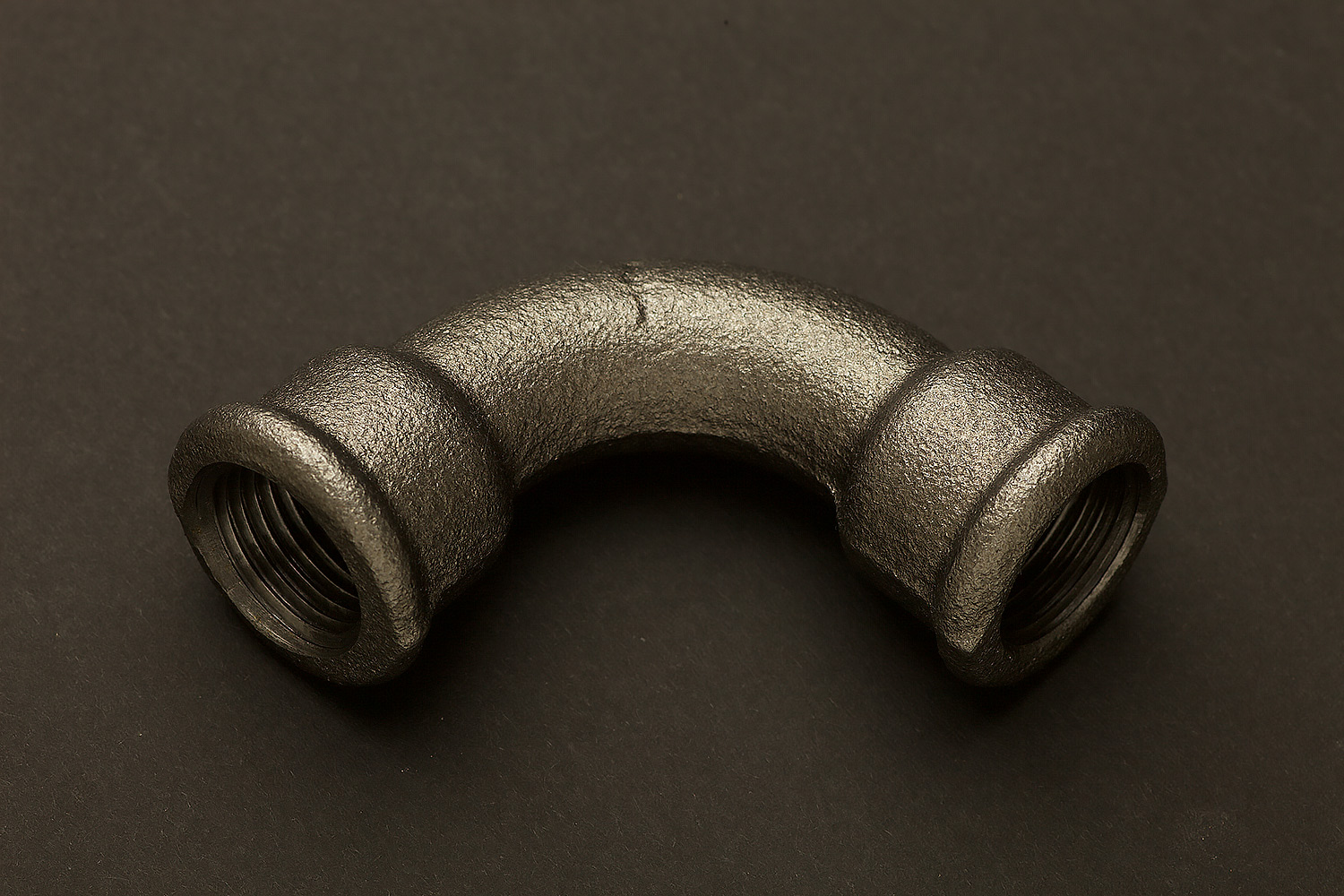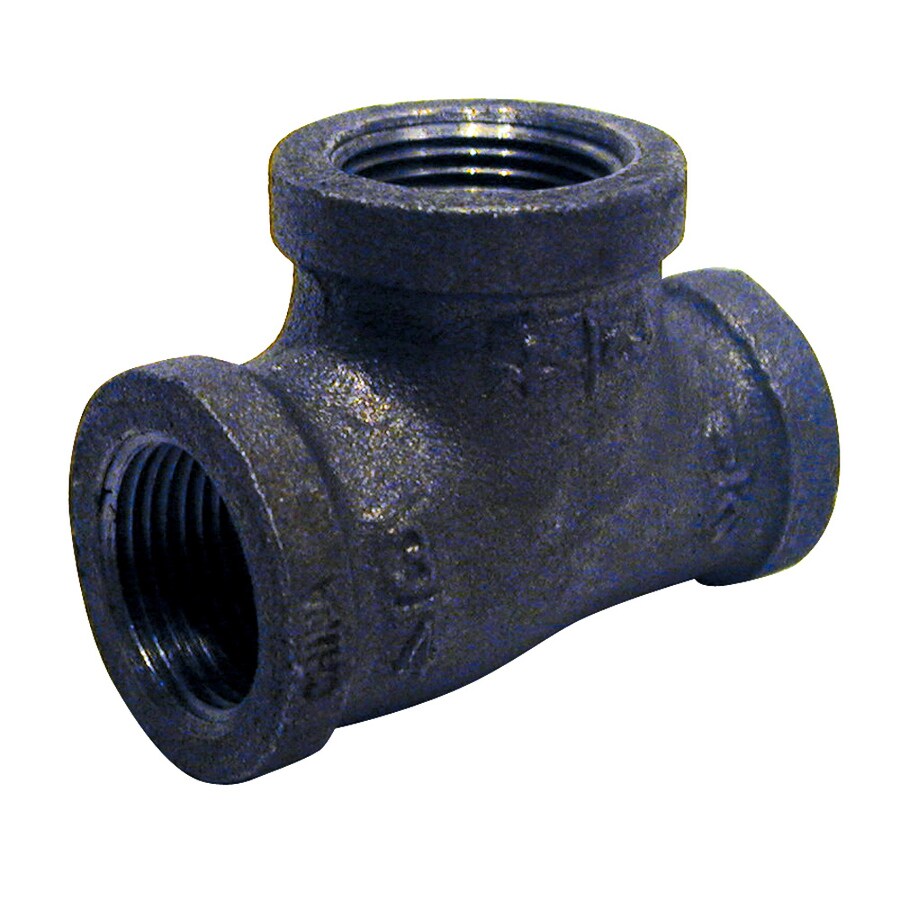
ASME B16.1 defines the AWWS flange, but it is only for flanges used in potable-water service at atmospheric temperatures.
#BLACK STEEL PIPE FITTINGS SERIES#
Series B flanges are normally selected for refurbishment work. Series A flanges are heavier and thicker than Series B for the same pressure and size.

ASME B16.47 covers two series, A and B, which represent large diameter applications.

ASME 16.5 defines the ANSI flange, the most commonly-used flange. Primarily, three standards govern pipe flanges. Seal rings provide an especially tight joint and for the same bolt stress applied to a flat-face gasket, can resist a higher pressure. A special case is the so-called blind flange, which is used to seal the end of a pipeline but allow connection to another pipe or piece of equipment later.įlanges can incorporate several different methods to seal adjoining faces, including O-rings, seal rings, and gaskets. Lapped flanges are often used where disconnections will be frequent as the flange can spin freely, simplifying bolt-hole alignment. The other various welded-on flanges permit higher pressures to be used. The threaded flange is suitable only for low- to medium-pressure applications. These styles include lapped, weld neck, socket weld, ring-type joint, screwed, and slip-on. Most pipeline equipment such as pumps and compressors are also connected via flanges for this same reason.įlange fittings are available in a handful of styles, rated by pressure and temperature. The use of flanges makes breaking the pipeline feasible so as to enable replacement of valves, etc. Require end prep to ensure the integrity of the final welded joints.įlanges are also used, with the resulting flanged sections of pipe connected via bolts. Pipe fittings and pipe lengths joined by butt welds The need for an expansion gap in the fitting precludes their use in high-pressure food applications. Socket fittings are welded into place with fillet welds, which makes them weaker than butt- welded fittings, but still preferable to threaded fittings for high-end work. Socket-weld fittings, usually forged, are restricted to smaller pipe diameters (up to NPS 4, but usually NPS 2 or smaller) and are available in 3000, 6000, and 9000 class pressure ratings, corresponding to Schedule 40, 80, and 160 pipe. As sizes and pressures increase, they are often welded in place by either butt-weld or socket-weld methods. In smaller sizes they are often threaded to match threads on the ends of pipe. Steel pipe fittings are often extruded or drawn over a mandrel from welded or seamless pipe. Although standards list threaded fittings up to fairly large diameters, these generally are not used today as the threading of large-diameter pipe is considered needlessly difficult.

While there are both malleable iron pipe fittings and ductile iron pipe fittings available, the improved mechanical properties and lower cost of ductile iron is causing a shift towards greater use of that material.įittings for steel (aka, “black pipe”) and galvanized pipe as found in residential and commercial plumbing work are generally cast and referred to as “malleable iron fittings." They can be galvanized. Mechanical compression flange fittings for iron pipe are often used Flanged joints employed in underground applications can subject the pipe to settlement stresses unless the pipe is adequately supported. Cast iron pipe is sometimes joined with bolted flanges, or in some cases, mechanical compression connections. Older systems before the 1950s were caulked using a combination of molten lead and a fibrous material such as oakum. Bell-and-spigot, or sometimes, hub-and-spigot, fittings are joined today primarily with elastomeric gaskets that fit inside the bell and accommodate the insertion of the plain pipe end or fitting. These hubless or no hub designs are sometimes referred to as rubber pipe couplings or rubber plumbing couplings and are especially popular for transitioning from one material to another-from copper to cast iron, for instance. Hubless designs rely on elastomeric couplers that are secured to the outer diameters of the pipe or fitting by clamps, usually a stainless steel band clamp that compresses the elastomeric material and forms a seal. Pipe Fittings Explained: Fitting Materials and Manufacturing Processes Cast and malleable ironįittings for cast iron pipe fall under hubless and bell-and-spigot styles.


 0 kommentar(er)
0 kommentar(er)
